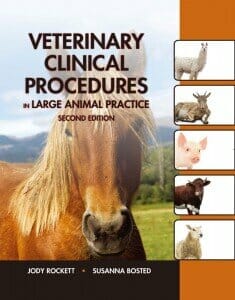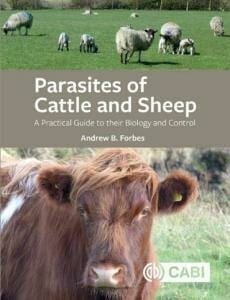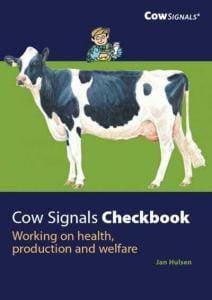Veterinary Clinical Procedures in Large Animal Practice, 2nd Edition

By Jody Rockett and Susanna Bosted
Veterinary Clinical Procedures in Large Animal Practice 2nd Edition PDF thoroughly addresses the most common clinical procedures performed on horses, cattle, sheep, llamas, goats, and pigs in large animal veterinary practice. Every procedure includes a stated purpose, a review of potential complications, a checklist of the equipment required, and step-by-step descriptions with corresponding rationale that not only explains what needs to be done, but why each action will lead toward a successful outcome for the patient. With the new inclusion of clinical procedures for sheep and the addition of current information related to each large animal considered, this edition seeks to fully prepare aspiring veterinary technicians and DVMs for the field.
- Facilitates learning by offering a procedural approach that clearly and concisely explains techniques utilized in the field.
- Speaks to a wide range of learner abilities; covering basic procedures like haltering horses or cleaning stalls to advanced procedures such as IV catheters, nasogastric intubation, biopsy and abdominocentesis.
- Explains the purpose of each technique to help learners understand how to accomplish a successful outcome for the patient.
- Prepares learners with the tools required to successfully complete procedures, including equipment lists and a review of potential complications.
- Offers reference materials in the Appendices that provide standard stats, husbandry information, vaccination requirements, and common terminology utilized in the field.
- New detailed procedures related to the care of sheep and current information on each animal keeps learners apprised of the latest techniques in large animal practice.
- Expanded coverage on handling dairy cattle during physical examination includes a new step-by-step explanation for operating a stanchion.
- Extended coverage of sample collection includes a new step-by-step explanation on urethal catherization of the goat for the purposes of urinalysis.
- Current information related to horses includes a new detailed explanation for microchip (RFID) implanation for clients who prefer a permanent, positive method of identification.
- Additional full-color photos define and clarify procedures while depicting current equipment and techniques utilized in the field.
This Book is Available For Premium Members Only












![Ettinger’s Textbook of Veterinary Internal Medicine 9th Edition [PDF+Videos] Ettinger’s Textbook of Veterinary Internal Medicine 9th Edition [True PDF+Videos]](https://www.vet-ebooks.com/wp-content/uploads/2024/10/ettingers-textbook-of-veterinary-internal-medicine-9th-edition-100x70.jpg)

![Textbook of Veterinary Diagnostic Radiology 8th Edition [PDF+Videos+Quizzes] Thrall’s Textbook of Veterinary Diagnostic Radiology, 8th edition PDF](https://www.vet-ebooks.com/wp-content/uploads/2019/09/textbook-of-veterinary-diagnostic-radiology-8th-edition-100x70.jpg)






